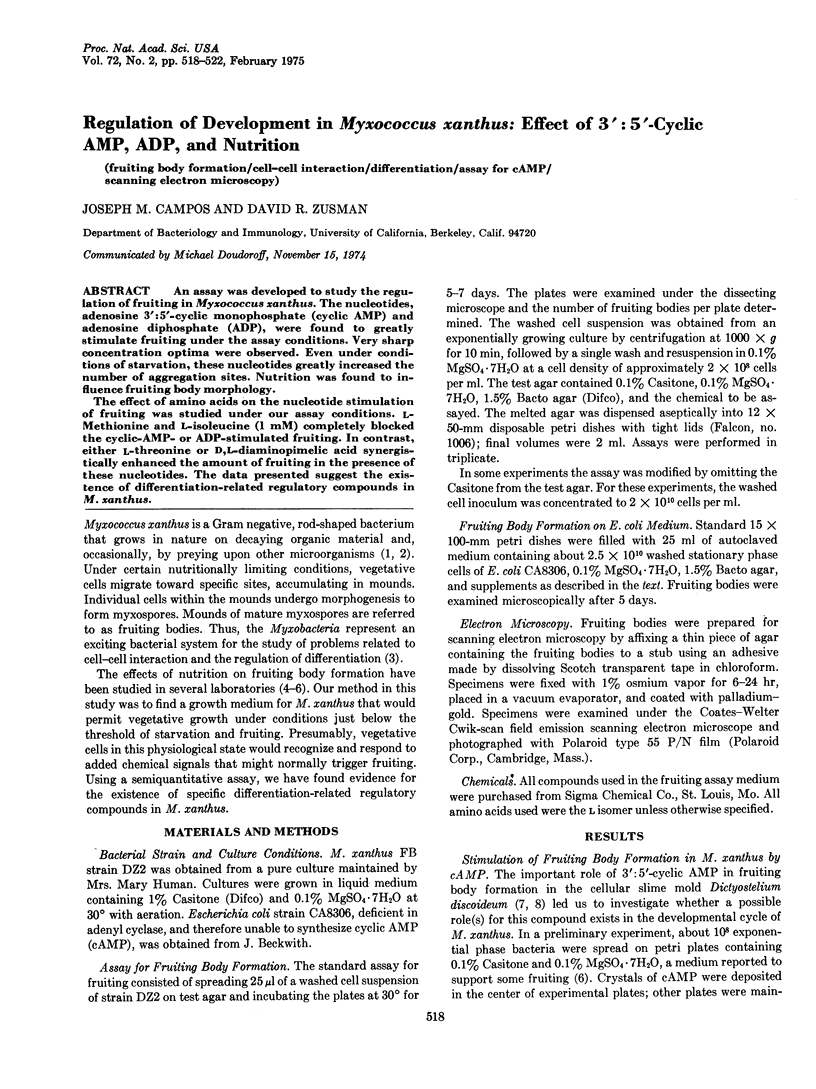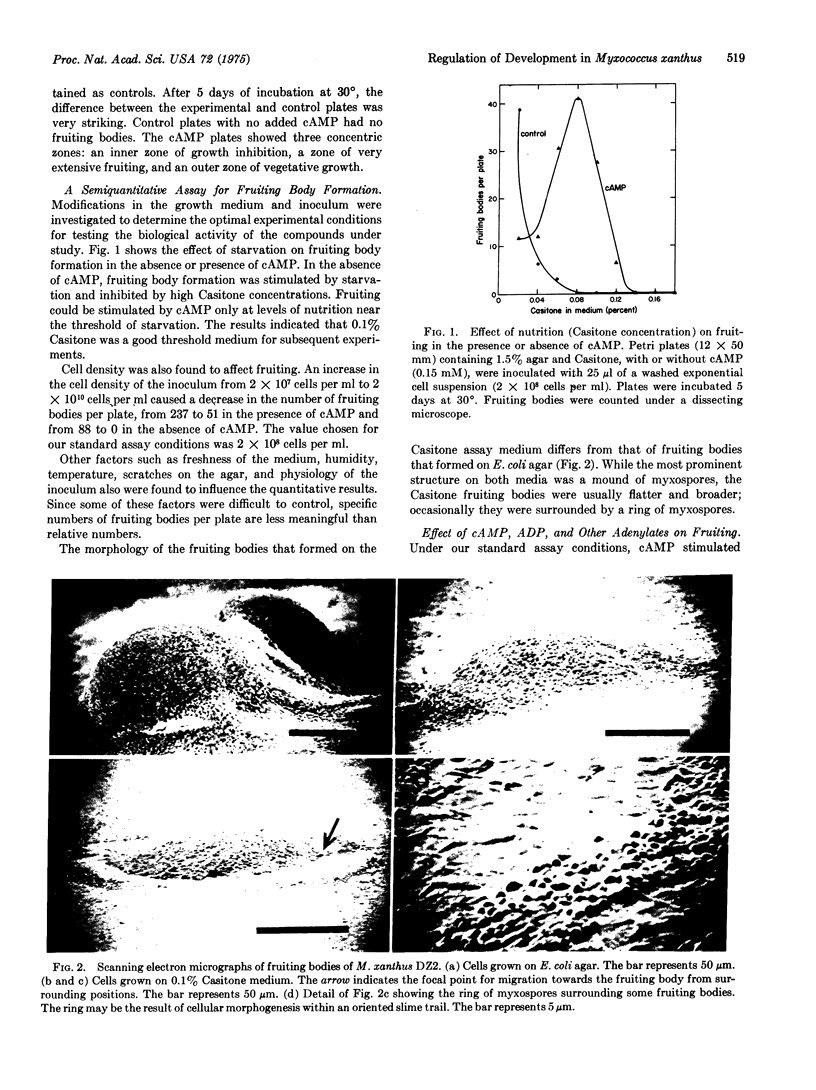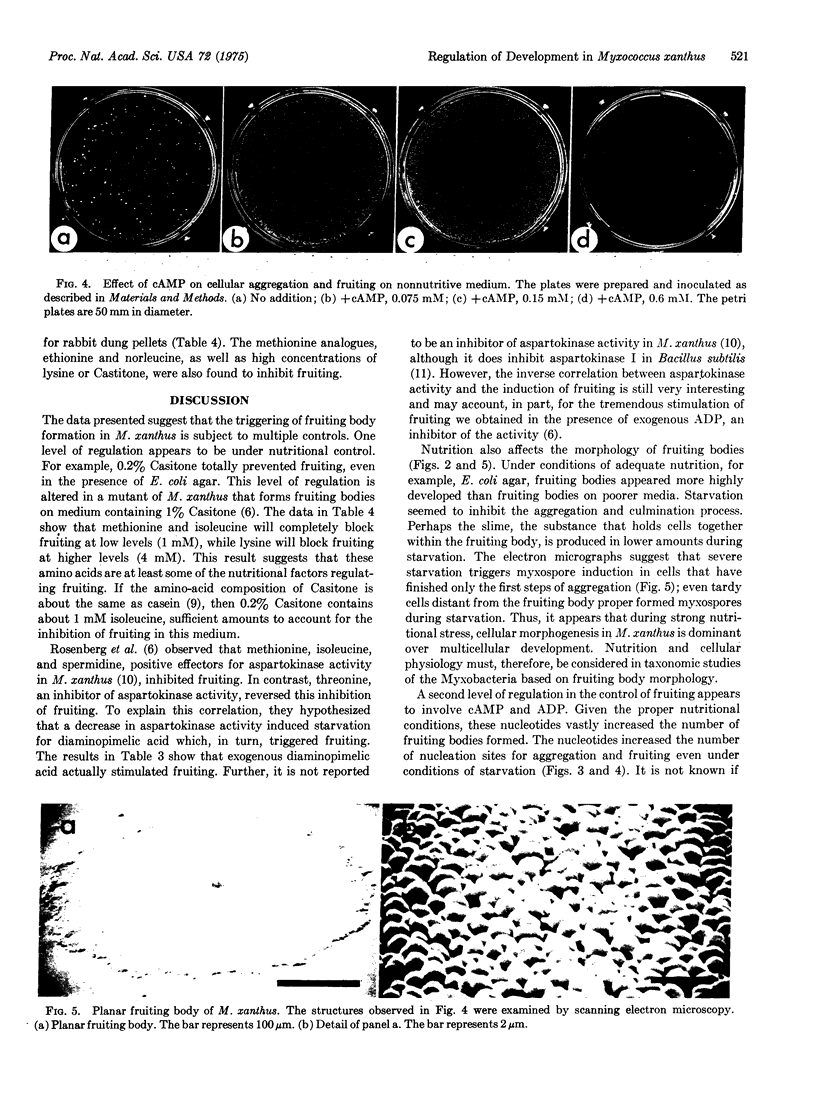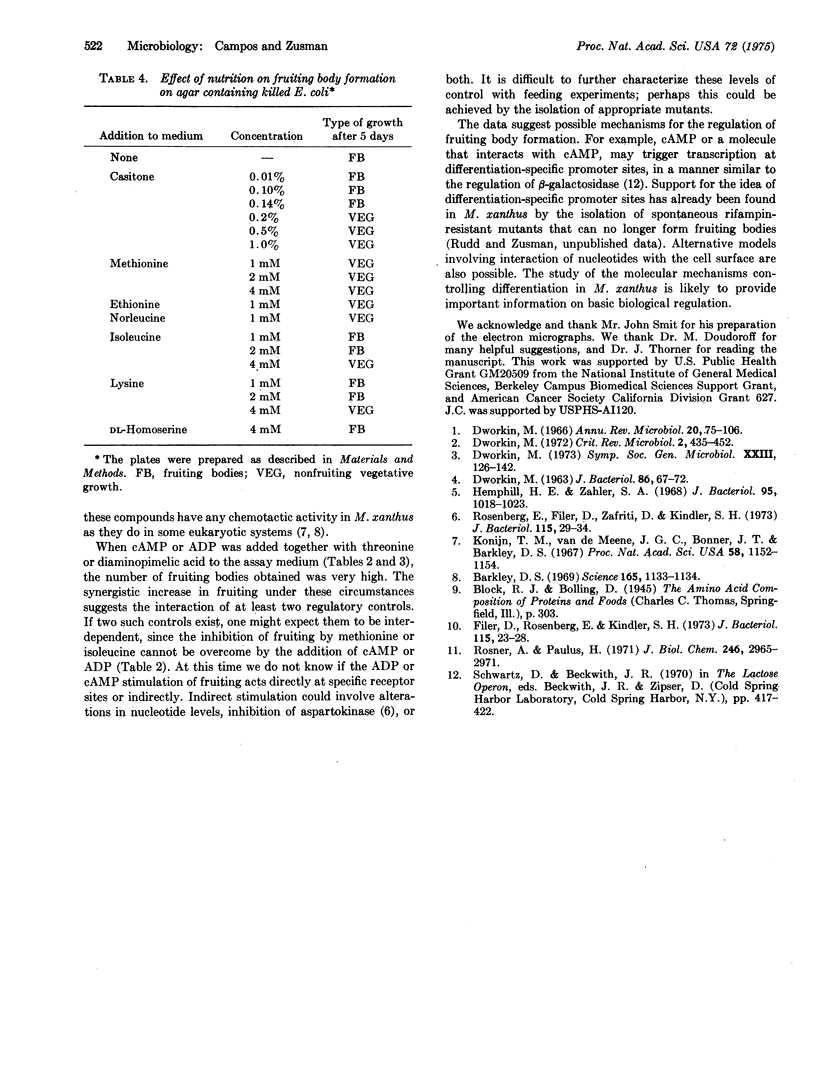Abstract
An assay was developed to study the regulation of fruiting in Myxococcus xanthus. The nucleotides, adenosine 3':5'-cyclic monophosphate (cyclic AMP) and adenosine diphosphate (ADP), were found to greatly stimulate fruiting under the assay conditions. Very sharp concentration optima were observed. Even under conditions of starvation, these nucleotides greatly increased the number of aggregation sites. Nutrition was found to influence fruiting body morphology. The effect of amino acids on the nucleotide stimulation of fruiting was studied under our assay conditions. L-Methionine and L-isoleucine (1 mM) completely blocked either L-threonine or D,L-diaminopimelic acid synergistically enhanced the amount of fruiting in the presence of these nucleotides. The data presented suggest the existence of differentiation-related regulatory compounds in M. xanthus.
Full text
PDF




Images in this article
Selected References
These references are in PubMed. This may not be the complete list of references from this article.
- Barkley D. S. Adenosine-3',5'-phosphate: identification as acrasin in a species of cellular slime mold. Science. 1969 Sep 12;165(3898):1133–1134. doi: 10.1126/science.165.3898.1133. [DOI] [PubMed] [Google Scholar]
- DWORKIN M. NUTRITIONAL REGU.ATION OF MORPHOGENESIS IN MYXOCOCCUS XANTHUS. J Bacteriol. 1963 Jul;86:67–72. doi: 10.1128/jb.86.1.67-72.1963. [DOI] [PMC free article] [PubMed] [Google Scholar]
- Dworkin M. Biology of the myxobacteria. Annu Rev Microbiol. 1966;20:75–106. doi: 10.1146/annurev.mi.20.100166.000451. [DOI] [PubMed] [Google Scholar]
- Filer D., Rosenberg E., Kindler S. H. Aspartokinase of Myxococcus xanthus: "feedback stimulation" by required amino acids. J Bacteriol. 1973 Jul;115(1):23–28. doi: 10.1128/jb.115.1.23-28.1973. [DOI] [PMC free article] [PubMed] [Google Scholar]
- Hemphill H. E., Zahler S. A. Nutritional induction and suppression of fruiting in Myxococcus xanthus FBa. J Bacteriol. 1968 Mar;95(3):1018–1023. doi: 10.1128/jb.95.3.1018-1023.1968. [DOI] [PMC free article] [PubMed] [Google Scholar]
- Konijn T. M., Van De Meene J. G., Bonner J. T., Barkley D. S. The acrasin activity of adenosine-3',5'-cyclic phosphate. Proc Natl Acad Sci U S A. 1967 Sep;58(3):1152–1154. doi: 10.1073/pnas.58.3.1152. [DOI] [PMC free article] [PubMed] [Google Scholar]
- Rosenberg E., Filer D., Zafriti D., Kindler S. H. Aspartokinase activity and the developmental cycle of Myxococcus xanthus. J Bacteriol. 1973 Jul;115(1):29–34. doi: 10.1128/jb.115.1.29-34.1973. [DOI] [PMC free article] [PubMed] [Google Scholar]
- Rosner A., Paulus H. Regulation of aspartokinase in Bacillus subtilis. The separation and properties of two isofunctional enzymes. J Biol Chem. 1971 May 10;246(9):2965–2971. [PubMed] [Google Scholar]





